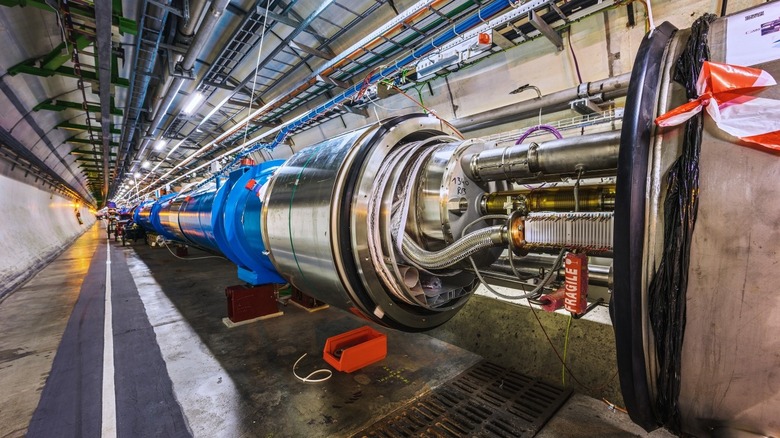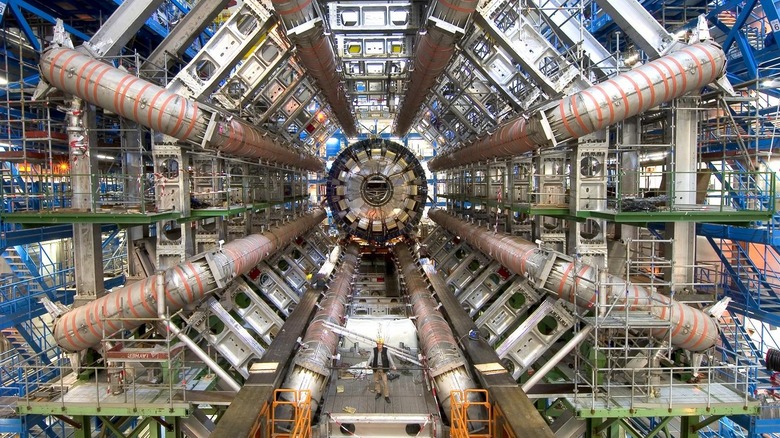Large Hadron Collider Comes Back Online To Unlock More Big Bang Secrets
The Large Hadron Collider (LHC) is ready to smash some particles again. The European Council for Nuclear Research — which goes by the more widely known name of CERN — has announced that after a hiatus of three years for maintenance and upgrade, the particle accelerator has been revived. The team at CERN successfully did a warm-up test with two proton beams traveling in opposite directions. To get back into its full groove, it will take another couple of months before scientists start experimenting with high-intensity particle collisions with high energy yields.
Notably, the upgrades made to the particle accelerator during its hiatus will allow operation at even higher energy levels. CERN's team is now readying up for an experimentation phase that will last four years and is slated to start this summer. In the days leading up to the LHC firing on all cylinders, more upgrades will be made to get it ready for particle beam collisions targeting a record high injection energy of 13.6 trillion electronvolts.
In comparison, the beams of protons that were fired up earlier today as a test only had injection energy of 450 billion electronvolts (450 GeV). The next round of experiments will be part of Run 3, marking the end of the second major shutdown period for the particle accelerator and the start of a multi-year series of tests. These tests are expected to allow scientists to collect data that'll set records in both energy and size. Collision counts are expected to eclipse both previous runs combined.
Readying to unlock more atonic mysteries
The number of particle collision experiments in Run 3 is expected to be increased by a factor of three, while ion collision experiment results are expected to be multiplied by a factor of 50 compared to previous runs. With the number of experiments going up, CERN hopes to unravel more details about the elusive Higgs boson, which also goes by the awesome name "God Particle." Fundamentally associated with what scientists call a Higgs field, the latter is believed to be the force that gives mass to other fundamental particles such as electrons.
Following its proposed existence in 1946 by Peter Higgs, it was the LHC that ultimately appeared to prove the existence of the Higgs boson in 2012 with the ATLAS and CMS experiments at CERN. LHC is somewhat of a freak, as it handles temperatures that are over 100,000 times hotter than the Sun's heart after protons collide. The upcoming wave of experiments at the facility in Geneva will also be the most rigorous tests for the application of the Standard Model of particle physics.
With the particle accelerator now gearing up for a souped-up run, the continuation of ATLAS and CMS tests will possibly reveal more details such as how Higgs bosons interact, the role played by the eponymous field for other particles, and whether it can finally unlock the doors to understanding dark matter and dark energy. The scientific community is also hoping to learn more about neutrinos and unearth more mysteries of the universe at sub-atomic levels.

